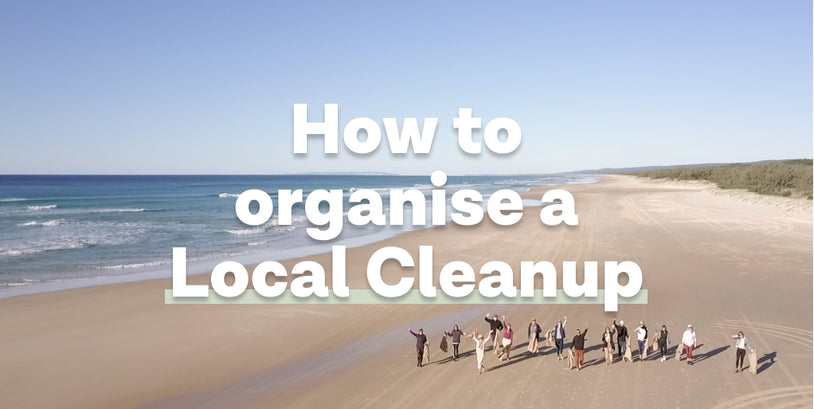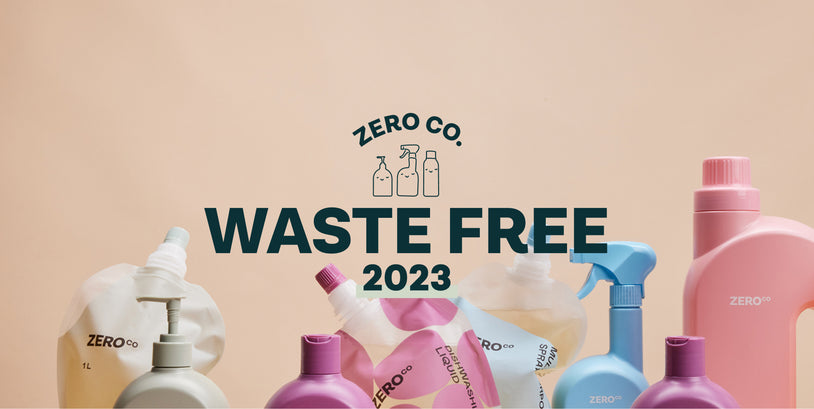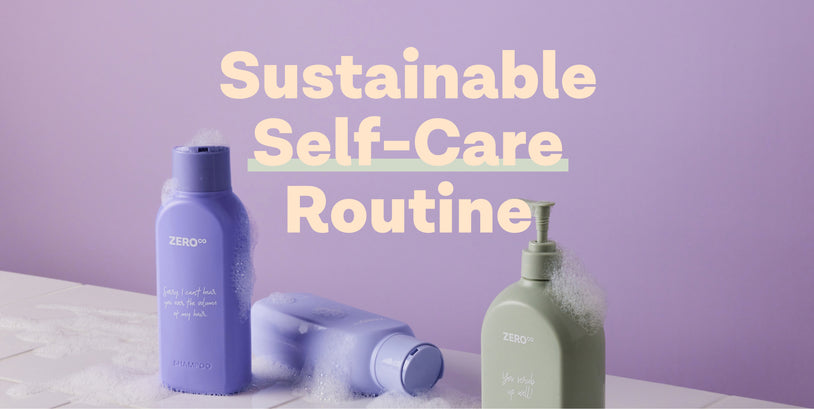1. Recycling is (mostly) a myth
Everyone gets that little tingle of satisfaction when putting out the recycling bin. You're doing a good thing, right? Sadly, it’s not that simple.
In Australia, only 13% of waste in recycling bins actually gets processed. And in most instances, recycling is more often downcycling, so the plastic bottle you chucked away can't be turned into a new version of the same thing. That rarely happens with plastic. Even worse, when a piece of single-use plastic is heated to be remoulded into something else, it becomes weaker. This happens every time it goes through the process, meaning plastic can’t be recycled indefinitely. So, the plastic we thought we were recycling eventually ends up making its way to our landfill and waterways.
The best way to win the war on plastic is closed-loop recycling. That’s turning our old single-use plastic water bottle and ALL the other plastic waste into a new bottle. Learn more about closed-loop recycling from our expert, Jo-Jo.
2. It breaks down, not up
Unlike some other materials, like paper or cardboard, plastic never breaks down over time. Worse, it breaks up as it gets older. And it lasts forever!
Heat and sunshine slowly turn single-use plastics, like the pesky water bottle, into smaller pieces until they become microplastics. These are tiny pieces of plastic, less than 5mm, which end up in our waterways, animals and even inside our own bodies.

3. It’s strangling the planet
Ready for some stats? About 300 million tonnes of plastic is produced every year. About half that amount is single-use plastic. Single-use plastic makes up a third of the litter we see on our streets. And a whopping 91% of plastic isn’t recycled, so it ends up in landfill or our environment.
This growing mountain of plastic is strangling our planet. There’s hardly a place on earth that’s free of single-use items. From Mount Everest to the Great Barrier Reef, you’ll see plastic in places that were once our most remote and pristine environments.
And not only is this sort of waste ruining the wonders of our world, but it’s also really expensive to clean up.
4. It ends up in our oceans
The boffins at CSIRO, Australia’s incredible scientific research agency, conducted a huge study on the rubbish along our coastline. They discovered about three-quarters of it was plastic. Most of it came from local sources and, not surprisingly, it was concentrated near urban centres.
Further out to sea, the CSIRO also discovered that most debris floating in our oceans was plastic. And that debris can be as dense as 40,000 pieces of plastic per square kilometre of ocean.

5. It’s harmful to animals
All that plastic creating a mess in our oceans and littering our countryside is a problem for animals too. They’re eating plastic. And if we eat those animals, we’re eating plastic.
Our sea life carries most of the burden. Researchers examining the bodies of beached whales found their stomachs were full of plastic. It can also be found in the guts of 90% of sea birds and in the stomach of turtles. Did you know balloons are the largest plastic killer of marine birds? And it can take just one piece of plastic to kill a turtle.
And just when you thought it couldn't get worse, the Plastic Pollution Coalition says there’ll be more plastic than fish in the ocean by the year 2050.
6. It’s harmful to humans
The chemicals that are used to manufacture plastic can be harmful to our health. These chemicals come from the endocrine disruptor family. That means they can cause hormonal imbalances, reproductive problems or even cancer. Plus, the jury’s still out on the effect of microplastics on the human body.
7. It limits the production of oxygen
Scientists have also found that chemical leaching from single-use plastic bag impairs the growth of a bacteria called Prochlorococcus. This is a marine bacterium that creates about 10% of the world’s oxygen. That can seem like a distant problem until you realise that one in every 10 breaths we take contains oxygen that this bacterium has produced. Single-use plastic is literally stopping the one thing we need to survive!
8. It’s resource intensive
Producing plastic is also incredibly resource intensive. The same amount of petrol that we need to drive 1km in a car will make fewer than nine plastic bags. It also takes a huge volume of resources to transport raw materials to manufacturing plants and again to distribute it. It’s like food miles, but for plastic.
9. Get ahead of the trend
The Australian government has banned lots of single-use plastics from the end of 2025. That’s still some years away, but why not get ahead of the trend and start phasing them out of your life now?
Removing single-use plastic from your life isn’t difficult, it only takes some small changes. Learning new habits now will set us up for success when the ban is implemented. And, because you'll be a trend setter, you can show friends and family how easy it is to give single-use plastic the flick!
Zero Co is helping reduce single-waste plastics with our growing-range of personal care and home cleaning products. We provide bottles made from reclaimed ocean plastic, products in refill pouches and a postage-paid return envelope. You order, we deliver, you return, we refill. Learn more.














.jpg?v=1649893142)
-copy.jpg?v=1649890428)
